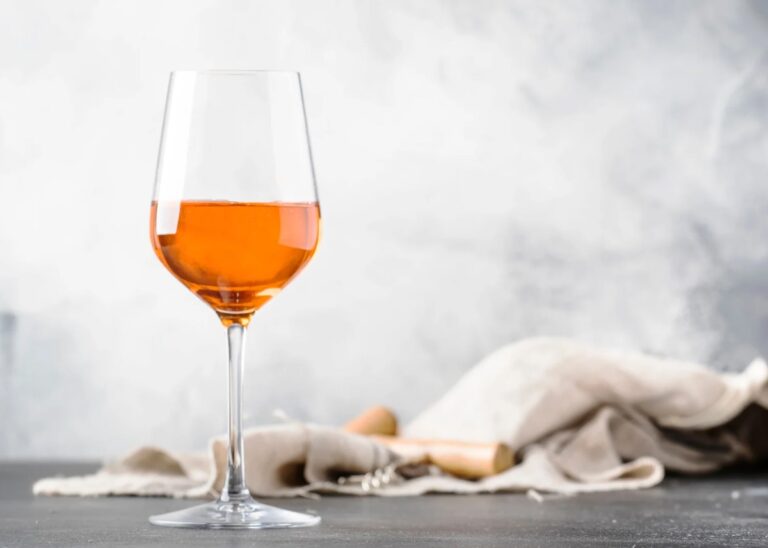[et_pb_section fb_built=”1″ _builder_version=”4.11.1″ _module_preset=”default” global_colors_info=”{}”][et_pb_row _builder_version=”4.11.1″ _module_preset=”default” global_colors_info=”{}”][et_pb_column type=”4_4″ _builder_version=”4.11.1″ _module_preset=”default” global_colors_info=”{}”][et_pb_text _builder_version=”4.11.1″ _module_preset=”default” global_colors_info=”{}”]Contents:
- Red Wine with Fish
- Which Wines with Lean & Flaky White Fish?
- Which Wines with Medium Texture Fish?
- Wine with Meaty Fish
- Pairing Wine with Strongly Flavored Fish
[/et_pb_text][et_pb_video src=”https://youtu.be/nA_HnphNX5Q” _builder_version=”4.11.1″ _module_preset=”default” width=”75%” width_tablet=”85%” width_phone=”100%” width_last_edited=”on|phone” module_alignment=”center” global_colors_info=”{}”][/et_pb_video][et_pb_text _builder_version=”4.11.1″ _module_preset=”default” global_colors_info=”{}”]
Transcript:
Hello and welcome to your new Bonner Private Wines video. We are continuing our wine masterclass today with a very practical guide, something you can apply immediately after watching this video. Given you have a nice piece of fish in your fridge or shop nearby you can get some from and given you have a few nice different wines on hand,
Today we are talking about how to pair harmoniously your fish dishes with some of your favorite types of vino. Let’s go.
Red Wine with Fish
So let’s talk about the elephant in the room first. If you like red wine, you’ve probably had this experience of having a bite of a fish or a seafood dish, salmon or scallops, for example, and finding out that the combination can be quite horrible and give a very harsh metallic aftertaste in your mouth, an extremely potent, powerful and un-pleasing fish flavor.
This is because of this clashing that the rule of thumb for wine and food pairing has always been meat with reds and fish with the whites. To this day, it’s still a bit unclear to scientists what causes this really unfortunate flavor reaction. But it seems it comes down to the high iron content and perhaps the tannins as well in certain red wines interacting with some fish, fatty acids or fish oils and resulting in this very bad taste.
It seems a bit random when this is going to happen, not between a particular wine and a specific dish. And that’s because we don’t really know what causes it. But unless you’ve tested your specific dish combo with the specific wine you’re intending to serve it with, it’s really best to avoid reds with fish or seafood. That said, some reds like this one are quite light in tannins and they can work quite nicely.
Those from which you can virtually not taste any tannins can actually be delicious with fish. So don’t really overlook that combination if you prefer reds, but go with some lighter cool climates. Pinot Noir, for example. The Pinot noir is probably your best chance of obtaining good fish and red wine combination or gamays like the French Beaujolais. This is a Beaujolais and it might be a little too dark, a little too tannic to go with the fish.
But a gamay or Beaujolais like this one can be a good choice. Now go with the meatier fish like tuna or salmon, because they tend to go best with the reds as we’ll discuss a little bit later. Also, avoid that squeeze of lemon on the dish because the acidity makes it even worse. Wine against a strong acidity in general never gets better.
Which Wine with Lean & Flaky White Fish?
So for our simple guide to pairing wine with fish here, I’m going to subdivide the different types of fish by texture and taste. So it’s easy to understand for you. Don’t worry, it’s not going to be a long list of names of different fish that you’ve never heard about, don’t worry. But just how the different fish types taste as subdivision categories of this.
For example, you have this very delicate type of white fish with very thin fillets, like a sole, a fluke flounder, a perch or sea bass, for example. Those have very subtle, very delicate flavors and a very fine and delicate textural element to their taste, as you know. So you want to go with the really simple low in flavor and light bodied white.
So just go for those really thirst quenching styles like a Pinot grigio from Italy or unoaked Chardonnay. You can go for a Chablis or even a petite Chablis, which is the lower Chablis version. So that’s if you want to go for a Burgundy chardonnay that are quite unoaked or a Portuguese Vinho Verde, a French muscadet from the Loire.
This is exactly what I’ve got here. You can go for a light Sauvignon blanc or a non vintage champagne or Spanish cava sparkling. Why not? If you want to have some fizz, some bubbles, some sparkles to your combination. Plenty of perfect options here. And I’m salivating already just thinking about those.
Which Wines with Medium Texture fish?
Say now that you have a bit more texture to your fish, those are probably the most common types of white fish like trout, cod, snapper, catfish, monkfish, haddock.
Those have different names in different countries as well. But this type of generic, let’s say, type of mid texture fish, with those you have a little more leeway, a little more freedom to go with slightly more powerful whites, although you still want to stay relatively mild, relatively reasonable in terms of flavor intensity for your wine to respect and not overpower the fish.
So a mid body, medium flavor intensity, white wine like a chardonnay, one that is not too oaky or aged, but an average chardonnay might be a little oaky, but not too much. So like the one we had, for example, in our domestic wine selection, US wine selection
from Sonoma was absolutely delicious. Perfect for fish. Or you can go for a puree from Alsace in France or Oregon, for example.
That’s a bit bigger than a Pinot Grigio. A Sauvignon blanc is a great choice here from California or New Zealand, like the one we had in our Australian Kiwi wine selection
Or an Italian Vermentino, you know, or a Soave or Gavi. The Italians, in fact, make many whites that are in that very style. Or you can go for a dry Riesling just like this one from Alsace or from Oregon or Washington.
You can also go for a chenin Blanc from the Loire valley originally, but South Africa makes perfect Chenin Blanc as well. You can go for lightly oaked or unoaked white Rioja, for example, if you want to go for Spanish. So they have a huge diversity of choices for that particular category of mid textural fish.
Wine with Meaty Fish
And if we’re going up a notch in terms of texture and flavor of our fish dish, now you have a meaty fish like tuna or salmon that are most—the most common ones in that category, but that could also be a blue fish mackerel, the monkfish, shark, swordfish as well.
Those are more steak-y types of fish, I would say. Here’s where you can introduce your bigger full bodied whites. I don’t have any examples here, but here’s where you can definitely experiment a little more with your lighter Pinot noir-like types of reds as well.
But if we’re staying on the whites here, you can get out of your cellar the oakier chardonnays, more of the Californian Australian style Chardonnays, classic styles of bigger oaky chardonnays. I would also recommend some white Rhone style blends like Marsanne, Roussanne, and/or Grenache blanc varietal wines or blended together Rhone style whites. But you can also go with the Burgundy chardonnays, the richer ones like the Meursault or an Austrian Gruner Veltliner just to name a few.
This is also where I think you can have and give great wine and food pairing pleasure with rosé wines that would virtually go fantastically well with fish. Rosés would literally go with any of these types of fish that we’ve just detailed and talked about. But I think this category is possibly the sweetest spot for rosé wines, especially the dry but rather opulent style of rosés.
One of these fish with a full bodied dry rosé or a full bodied white: this to me, sounds like a heavenly moment on Earth…
Pairing Wine with Strongly Flavored Fish
And finally you’ll have our last fish type here. Those that taste really fishy and they taste quite salty as well. It really tastes like the sea itself. Right. And that’s, of course, the anchovies or the sardines, the herring or the grilled mackerel.
So in this category, you can actually get a little more complicated to simplify, as I’ve just done, as wines of different categories may work really well with an anchovy pizza or salad with anchovies or grilled sardines, for example, the very lightest styles of whites that we’ve, as we’ve talked about, like the Pinot Grigio, will certainly work fantastically here and always be a safe choice to counterbalance the saltiness of the fish.
But you can also go with a full bodied Rhone style, like a Viognier or a Grenache blanc. Those from from the south of France, where they have lots of salads and anchovies and grilled sardines, those have been developed to go fantastically well with this type of fish. So might like also to counterbalance the sweet, the saltiness of the fish with some sweetness, like with an off dry riesling or a sparkling Lambrusco rosé from Italy is also where you may want to experiment with your light reds.
Yes, it’s possible, but make sure to go with a very light, low tannin red wine or it might class—clash with these really fishy type of fish. Because indeed, pairing wine with fish is always a bit of a surprise. And it’s always going to be it’s always going to be a new experiment, an experience. You may not get it all right all of the times.
And that’s okay. That is the joy of trying and testing. You might fail miserably sometimes, but if you stay within the simple guidelines that we’ve laid out today, chances are you want then if you feel like experimenting a little further and beyond, like I suggested with this last category of strongly flavored fish, you’ll be taking more risks for sure, more risks of failure, perhaps, But you also dramatically increase your chances of finding that perfect combination of revealing the flavor burst on your palate like something you’ve never experienced before.
Wine and food pairing does that. Sometimes it does. It’s rare, but it does. And this is certainly one of the greatest culinary joys you can experience in your life. So why not? And I’ll leave it here for today. Thanks for watching and I will see you soon. In the wonderful world of wine, which wine am I going to go for with my fish?
Maybe the mid body white. That’s safe. Cheers.
[/et_pb_text][/et_pb_column][/et_pb_row][/et_pb_section]



